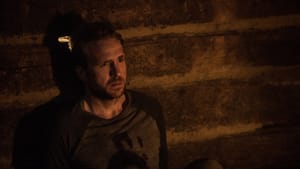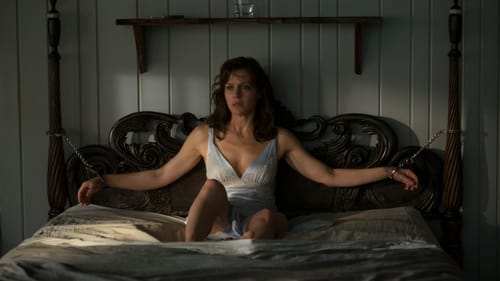Stay in the Loop
BSR publishes on a weekly schedule, with an email newsletter every Wednesday and Thursday morning. There’s no paywall, and subscribing is always free.
Falling for the darkness
At the darkest time of year, horror movies bring me unexpected healing

In a pocket-sized notebook near the TV remote, I keep a list of movies I want to see. Over the past few years, horror movies have become a growing presence and increasing priority. This would have been unthinkable in the past when I saw gore as gratuitous, hated feeling afraid, and energetically avoided both. An unlikely fan of horror, I now embrace it. My journey to horror began with seeking to understand why I hated it.
Deliberate introspection including therapy and journaling revealed a general dislike of fear and what might incite it. The dislike made perfect sense; external and circumstantial forces shaped my aversion. An unpredictable home environment and a childhood experience of navigating terror alone shaped my personality from a young age. I don’t remember a time when I liked surprises, enjoyed risk, or preferred spontaneity to planning.
Feelings about fear can be easier to hide than these traits, yet scary scenes appear in genres besides horror. In young adulthood, I suffered a love-hate relationship with The X-Files. The writing was good, though the show sometimes scared me. When that happened, I hid under a blanket, kept the lights on at bedtime, and awoke gasping, heart pounding. But I couldn’t stop watching.
Fear is a basic human emotion, a natural biological response, and a survival instinct that keeps us safe. Despite my avoidance and in the absence of threat, fear hounded me. My fear felt like a low-grade headache, dull yet constant. It quickly escalated into a major pain. No wonder I never liked scary stuff.
A darker path
Changing my relationship with it was an inside job, intentional and self-directed. A separate project lent itself to this aim. After publishing a book in 2021, I set an intention of watching more movies while expanding my cinematic horizons. I sought out genres I usually skipped, like action and Western, and watched movies two in a row.
A pair of British movies about outdoor adventures gone wrong sent me down a darker path. I chose the action thriller A Lonely Place to Die (2011) because it has a female protagonist. In it, some mountaineering enthusiasts on a rock-climbing trip find excitement they did not anticipate. The movie’s imagined threats scared me more than the cliffs and mobsters that actually appeared on screen, just like the deadly creatures in 2018’s A Quiet Place were scarier before I found out what they looked like.
But if the unknown is usually scarier than the monster eventually revealed, The Ritual (2017) highlights an exception. This terrifying movie combines a frame narrative about tragedy, guilt, and shame with a powerful punch of folk horror as its characters face the results of a hiking shortcut through the forest. It was a difficult watch at the time, with a creature inspired by Norse mythology that haunts characters’ dreams, hijacks their senses, and takes forms worse than my imagination. I would never have reflected on this distinction between seen and unseen horrors without this movie project.
Persistent scares
I didn’t sleep well after The Ritual, but I did not have nightmares either. This emboldened me to increase my viewing of scary movies incrementally in hopes of improving my tolerance. When performed in a clinical setting with professional supervision, this approach is called exposure therapy. So I kept going, diving deeper into horror with two movies about women with terrible dreams. Come True (2020) opens with one of the protagonist’s nightmares, and it disturbed me so much that I nearly gave up three minutes in. I had a similar experience with Gerald’s Game (2017), which contains horrors I did not anticipate.

My persistence was rewarded. Soon after, I realized that these movies stayed with me, and I kept thinking about them. Not because they terrified me but because they interested me. While Come True and Gerald’s Game may be best categorized as horror movies, they also explore a heroine’s psyche in complex and fascinating ways.
The horror scholar
I began watching more and more horror, focusing on features by and about women. Titles like Raw (2016), Swallow (2019), and Fresh (2022) opened my eyes to horror’s rich diversity and its unique capacity for questioning cultural ideals about gender, sexuality, bodies, and autonomy. By mid-2022, I had become a genuine fan of movies like these and their uses of body horror.
Things came full circle the following year. A professor by day, I read feminist scholarship on horror and began presenting my own at academic conferences. People lined up to talk with me afterward, but my changed relationship with fear is sweeter. In late summer 2023, I put it to the test. The Philadelphia Film Society presented a screening of the 2001 sci-fi thriller Donnie Darko. Twenty years earlier, this movie provoked a bout of insomnia, and I felt uneasy just thinking about it. At the Film Society event, I waited for fear and it never came. Instead, I ate M&Ms, enjoyed the movie, went home, and slept well. My limbic system (the part of the brain that processes and governs emotions) understood that what I saw on screen was not a threat to me.
Exploring darkness and the terror it may conceal offers meaning and even comfort, especially at the darkest time of the year. For me, horror movies illuminate the darkness inside in ways that lead to healing. Watching them reduced my aversion to scary scenes, and the journey brought me toward greater understanding of myself.
Sign up for our newsletter
All of the week's new articles, all in one place. Sign up for the free weekly BSR newsletters, and don't miss a conversation.

 Melissa Strong
Melissa Strong